With its relatively low price point and feel-good factor, the chocolate confectionery category is more than holding its own in the forecourt shop. According to IRI data, the chocolate confectionery category in the convenience channel is now worth £1.3bn and growing by 3% year-on-year.
Singles make up the bulk of the category with 60% of all confectionery sales in convenience stores being countline products, but this sector is currently declining by 2%. In contrast, while all confectionery sharing bags that’s sugar and chocolate are growing by 4% year-on-year, chocolate sharing bags are growing by a whopping 12%.
Graham Walker, trade communications manager of Nestlé , says: "Sharing bags are a growing trend and if you think about forecourt retailers and forecourt shopper missions, it’s very impulse. They pay for their petrol, see some chocolate and buy it. People going on a journey will often buy sharing bags, so this is very important for forecourts."
Bep Sandhu, trade relations manager at Mars, agrees that sharing is of growing importance in forecourt shops. While 45% of confectionery products purchased in a forecourt are consumed immediately, Sandhu says that 25% of confectionery is also purchased for consumption later in the day.
"This highlights the importance of the chocolate sharing category to forecourt traders, as customers look for treats to enjoy at home with friends and family," she says.
Some brands are also enjoying good growth with sharing blocks. Nestlé’s Aero blocks, for example, are growing by 53%. Walker says that this growth is largely being driven by £1 price-marked packs. "Retailers like a simple price-marked pack and shoppers like £1 price marks because they feel they’re getting good value," he says. "We’re also price-marking Smarties, Milky Bar medium and Milky Buttons with a 35p flash."
Likewise, shopper research company HIM’s price and promotions study found that one third of retailers were offering more price-marked packs this year than last year and 40% of convenience shoppers would be encouraged to buy price-marked packs because they are considered to be very good value.
The female touch
Most women love chocolate. That’s a fact. So it’s no surprise that confectionery companies are heavily targeting female consumers with specific products.
This month, for example, sees the launch of Cadbury Dairy Milk Bliss, a chocolate bar with a vanilla mousse centre covered in milk chocolate.
Available from October 11, Cadbury Dairy Milk Bliss will be supported by a £2.2m investment including TV advertising, outdoor, digital, PR and point-of-sale material.
Susan Nash, trade communications manager for Cadbury, says: "We are hoping that people will take time out from their busy day to pamper their taste buds with our delicious new Cadbury Dairy Milk Bliss bar. It has performed very well during testing with 72% of those who tried it stating that they intend to purchase the product."
Next month will see the launch of Galaxy Bubbles in a large block format, which will carry a ’One million books to be won’ on-pack promotion.
Meanwhile, Nestlé is evolving its female-targeted Kit Kat Senses product with the launch of a caramel cream variant. Since its launch, Kit Kat Senses has attracted more female consumers to the chocolate snacking category. According to Nestlé, snacking products like Kit Kat are predominantly eaten by males, but Senses has reversed this with 62% of all Senses products sold being consumed by females, as opposed to only 40% for the standard Kit Kat products.
Kit Kat Senses caramel cream will replace the hazelnut variant. It is being supported by a £2m campaign, which is part of a £25m campaign that supports the entire Kit Kat brand this year.
Display tactics
Research by Kantar Worldpanel looking at the purpose of shopping trips has identified the growing importance of the one-need shopping trip, making ranging and merchandising the number one factor that will fuel chocolate confectionery sales.
"Many forecourts are already doing range and merchandising very well," says Nestlé’s Walker. "Some displays are absolutely outstanding and forecourt retailers’ quality of merchandising is outperforming the sector. They are the people that are really helping to drive this particular shopping need and taking advantage of it by having those excellent displays."
When it comes to merchandising, every confectionery company offers different advice, but it makes sense to stock the best sellers, including those that are specific to your individual customer base, and site similar products together.
According to research by Nestlé, if you merchandise by need states for example, hunger or treat you can increase your sales by 8%. "If you take hunger, this is customers looking for something that will fill them up," explains Walker. "You would use beacon brands that fulfil this need state such as Mars Bar or Kit Kat Chunky in the centre of the hunger section, multiface them, and put all the other hunger products around them. The shopper will then make their selection in that section."
With 80% of confectionery sales coming from the main fixture, it’s important retailers get that right first, but secondary displays can also help to drive sales of chocolate confectionery. Says Walker: "If you site a floor bin in the prime area on the way to the till and use a price promotion on the display, you can increase sales by up to 450%. And if you use a counter unit next to the till you can increase sales of those products by 18%.
"Many forecourt retailers have big magazine and newspaper displays and if you put an impulse unit on the shelf, you can increase sales of that product by up to 15%," adds Walker. "Retailers with takeaway hot beverages have a great link-purchase opportunity. Retailers should consider a deal that encourages shoppers to buy a coffee and a Kit Kat for example. The Kit Kat then becomes an incremental purchase."
Bep Sandhu at Mars agrees that secondary displays are a great way of driving promotional activity and maximising the sales potential of the store as a whole. "Once the main display features the optimum range and is driving sales in store, traders should look to implement secondary confectionery sites or themed areas to capitalise on impulse sales.
"For example, siting confectionery at the till, where footfall is at its highest, is just one great way of driving those impulse sales. Not only that but secondary siting using our merchandising units such as the Slenda Glenda with its small footprint, allow you to carry new ranges you might not otherwise be able to."
Secondary displays are part of Mars’s new merchandising model called the Arc of Ease. The total store approach is designed to help retailers to respond to the needs of the post-recessionary consumer and capitalise on the impulse sales opportunities that the confectionery category can offer.
The model encourages retailers to implement a series of display and range initiatives based on their specific requirements. Recommendations will help them to develop a tailored display, responding to the unique characteristics of their consumer demographic.
"By working closely with their Mars sales representative, retailers can tailor their range both main display and secondary sites to their unique shopper profile, which will vary based on their location and store size," explains Sundhu. "Mars sales representatives will also be advising them about what point of sale is available and how this can be implemented to maximise return."
Keeping abreast of new product development is also important when it comes to ranging. And, according to Nestlé’s Walker, having your finger on the pulse of product development will become more important as the digital media platform continues to develop. Walker says that companies are now spending more on digital campaigns than TV advertising.
"An increasing number of people are interacting with digital media and with 67% of the world population having a mobile phone, more people are communicating through this medium. We can launch a product and have consumers participate in the brand immediately through something like Twitter or an iPhone app. It’s so quick and fast that activity can translate through to the stores that much quicker.
"No longer can we do slow distribution. The moment it’s launched consumers see it so retailers need to be fleet of foot more than ever before. It’s critical they react quickly and it’s only going to get faster."
Top 10 in convenience
1.Mars Bar
2.Nestle Kit Kat Chunky
3.Cadbury’s Dairy Milk
4.Snickers
5.Cadbury’s Wispa
6.Cadbury’s Twirl
7.Twix
8.Maltesers
9.Nestle Kit Kat
10.Bounty
Source: Kantar Worldpanel
Successful Promotion
Promotions are key in petrol forecourt stores and, according to Mars, 78% of customers will buy more or the same amount of promotional items as they did in the past 12 months.
To make a promotion successful, forecourt retailers should follow these key tips:
l Tailor the products included to meet key customers
l Make the promotion stand out in store with POS
l Keep the mechanic simple, such as ’3 for £1.20’
Source: Mars
Autumn Confectionery
Halloween grows in popularity year after year, making it an important occasion for confectionery.
Susan Nash, trade communications manager at Cadbury UK, says: "Halloween is significantly growing as an occasion and is now the third largest season behind Christmas and Easter.
"This creates an opportunity for retailers to make the most of the season in store by creating dedicated displays."
To help retailers cash in on incremental confectionery sales opportunities this Halloween, Cadbury has launched three products in its biggest Halloween investment to date.
New Dead Heads are mini milk chocolate heads filled with blood red caramel. The 80g sharing bags have a rrp of £1.09. There are two pack designs available with nine individually-wrapped heads inside.
The Natural Confectionery Company (TNCC) has also launched two Halloween-themed sharing bags: Spooky Treats and Cauldron’s Mix. The treats come in 180g bags, with a rrp of £1.49. A £1 price-marked pack is available for independents.























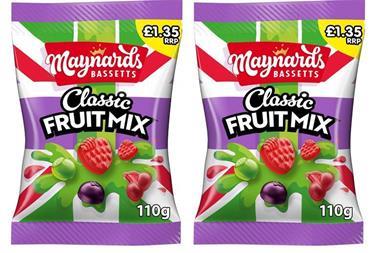
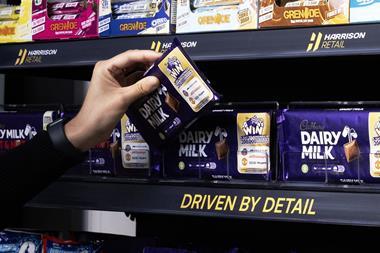

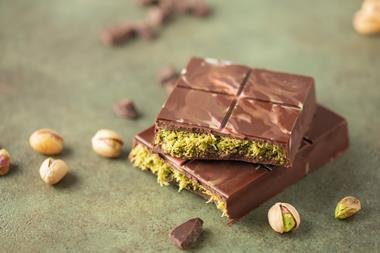
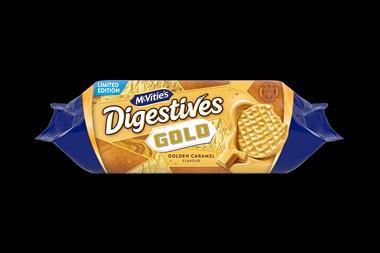

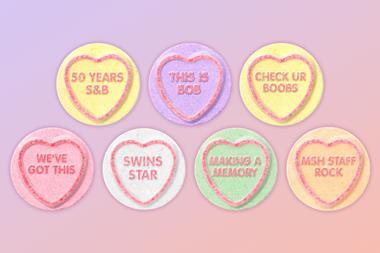
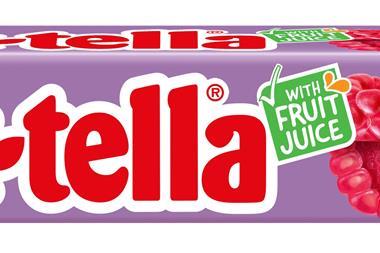
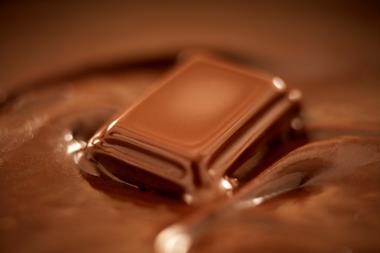
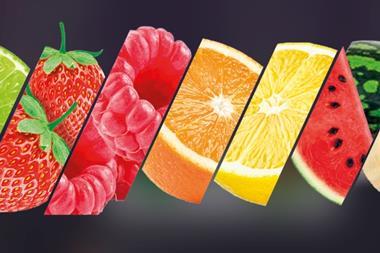
No comments yet